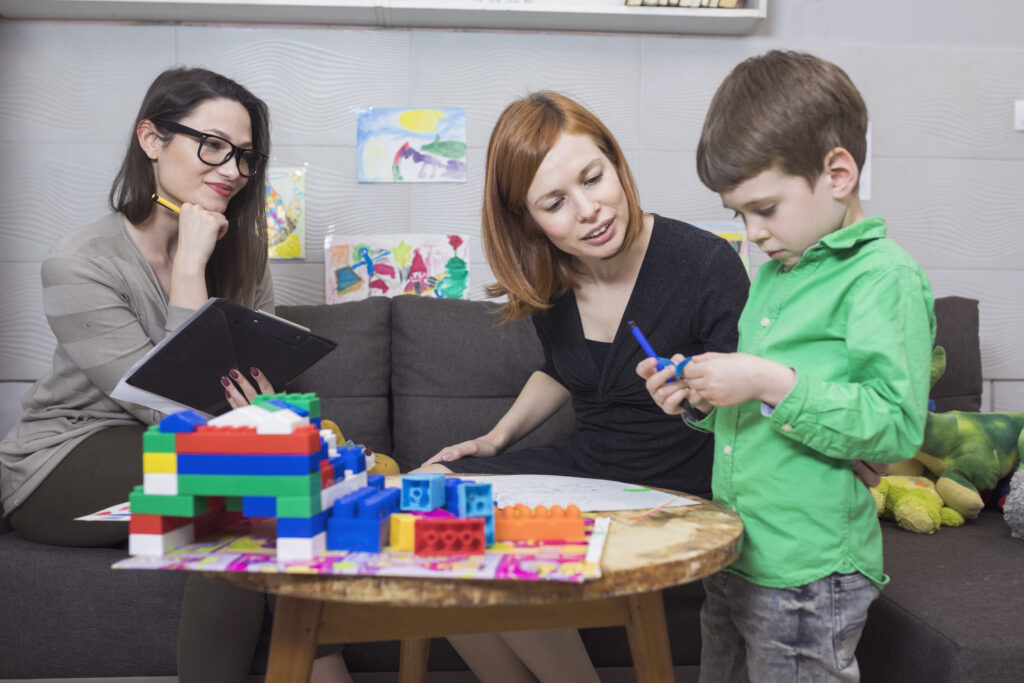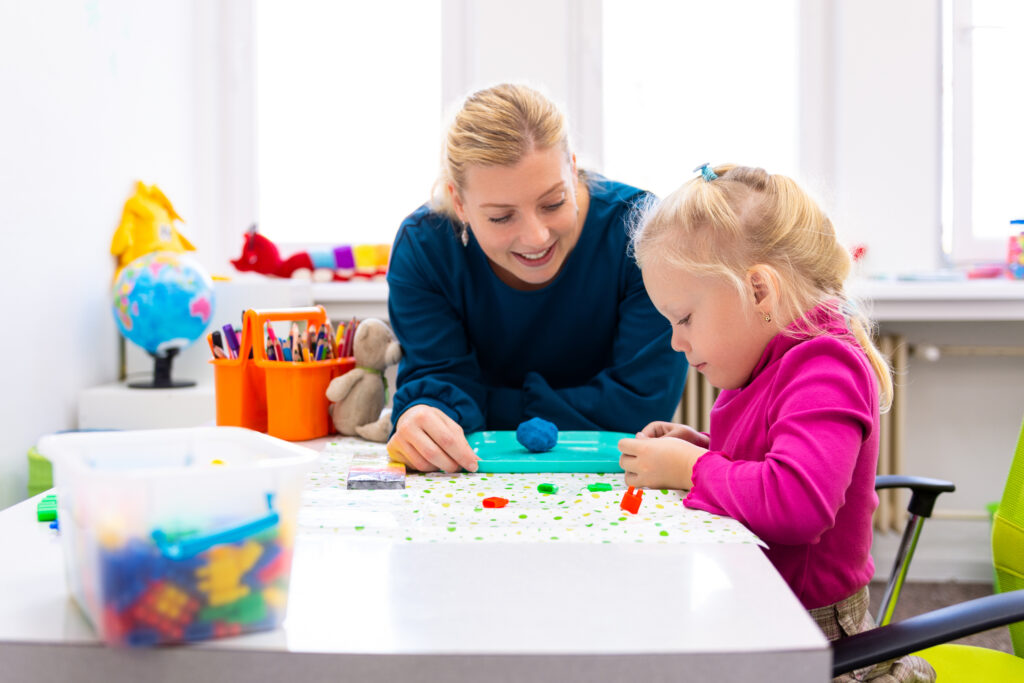Understanding AAC: A Lifeline for Children with Limited Speech
Have you ever watched a toddler struggle to explain what they want when they’re tired or overwhelmed and unable to find the words, no matter how much they try? Now imagine that same difficulty, not just for a moment, but every day. This is the reality for many children with autism or other speech and language impairments.
Augmentative and Alternative Communication (AAC) refers to a broad set of tools and strategies designed to support or replace spoken language. AAC systems help individuals who cannot use verbal speech effectively to communicate their needs, thoughts, and emotions. These tools range from simple picture cards to sophisticated speech-generating devices, and their primary goal is to empower communication and enhance quality of life.
What Are the Main Types of AAC?
AAC is typically grouped into two categories:
- Aided AAC: Requires tools or devices, ranging from low-tech picture boards to high-tech electronic systems.
- Unaided AAC: Relies solely on the individual’s body, such as gestures, facial expressions, or sign language.
Both types can be powerful tools, especially when customized to the individual’s needs and supported by therapies like ABA.
Aided AAC Systems: Tools That Support Communication
Low-Tech AAC
Low-tech AAC systems are defined by their simplicity and lack of electronic components. These tools are often used in early intervention settings or when high-tech systems are not available.
Common Low-Tech AAC Examples:
- Picture Cards / PECS (Picture Exchange Communication System):
These cards display images representing objects, actions, or emotions. A child might hand a card showing a snack to request food. PECS is especially effective for visual learners or children with fine motor challenges. - Communication Boards with Symbols:
These boards contain grids of images, words, or symbols. The user points to the relevant symbol to communicate. Boards can be customized based on vocabulary, routines, or thematic categories (e.g., school, home, emotions). - Printed Word Charts:
For children who can read, printed word boards allow them to point to specific phrases or sentences—ideal for expressing more complex ideas with minimal equipment.
Key Benefits of Low-Tech AAC:
- Affordable and durable
- Easy to customize for different environments
- No batteries, charging, or technical support required
- Ideal for home and classroom use
While they lack features like voice output or predictive text, low-tech AAC tools are still incredibly effective in reducing frustration and building foundational communication skills.
High-Tech AAC
High-tech AAC systems use electronic devices—often equipped with screens, touch functions, and synthesized speech—to help users communicate. These tools are especially powerful for children who are ready for more complex expression or who benefit from auditory output.
What Are Speech-Generating Devices (SGDs)?
SGDs convert user inputs—such as pressing icons or typing words—into spoken language. These devices can store thousands of vocabulary items, sentences, and custom phrases, allowing users to communicate anything from basic needs to abstract ideas.
Key Features of High-Tech AAC:
- Text-to-speech functionality
- Voice customization (age, tone, gender)
- Dynamic vocabulary that can grow with the user
- Visual scene displays and interactive interfaces
AAC Apps and Tablets
Thanks to modern technology, tablets and smartphones can now serve as full-featured AAC systems. Apps such as Proloquo2Go, LAMP Words for Life, or TouchChat turn everyday devices into speech-generating tools.
A study by Moore and Brunner (2023) highlights this shift—SGDs are no longer bulky standalone devices; they are now sleek, socially accepted, and more affordable.
Why Tablets Are Popular AAC Tools:
- Lower cost than traditional SGDs
- Less stigmatizing for children and teens
- Multi-functional (education, entertainment, internet access)
- Easy to integrate across home, school, and therapy
Unaided AAC Systems: Communication Without Devices
Not all communication tools require equipment. Unaided AAC systems involve movements, signs, or expressions made with the body. These are especially helpful when devices aren’t accessible or when introducing early communication skills.
Examples of Unaided AAC:
- Sign Language:
A structured visual language with grammar and rules, sign language allows individuals to express needs, ideas, and emotions using hand shapes and body movements. It’s highly effective for nonverbal children with good motor coordination. - Gestures:
Simple actions—like pointing, waving, or nodding—are foundational to communication. Many children begin with gestures before transitioning to aided AAC systems. - Facial Expressions:
Emotional communication often begins with facial cues. A smile, frown, or raised eyebrow can add valuable context or express meaning when speech isn’t possible.
When Is Unaided AAC Helpful?
- In the early stages of communication development
- During transitions, tantrums, or moments of dysregulation
- In settings where devices aren’t available (e.g., bath time, playground)
AAC and ABA Therapy: A Collaborative Approach
One of the most effective ways to implement AAC is through Applied Behavior Analysis (ABA) therapy. AAC can significantly enhance ABA outcomes by giving children a reliable method of communication, especially when verbal speech is limited.
Benefits of AAC in ABA:
1. Skill Development
ABA therapists and Speech-Language Pathologists (SLPs) work together to teach children how to use AAC systems correctly. This includes:
- Requesting items (manding)
- Labeling objects or people (tacting)
- Responding to questions
- Expressing emotions or preferences
AAC tools can be integrated into Natural Environment Teaching (NET) or Discrete Trial Training (DTT), ensuring the child uses communication meaningfully in different settings.
2. Generalization of Skills
Children with autism often struggle to transfer skills learned in therapy to other environments (home, school, community). AAC use within ABA can be systematically practiced across multiple environments, helping the child generalize communication skills.
As Moore and Brunner (2023) point out, the ability to use communication tools consistently across contexts leads to greater autonomy and less dependence on adult prompting.
3. Data Collection for Personalization
ABA programs rely on data. AAC usage can be tracked—button presses, phrase selections, or context-specific interactions—to fine-tune teaching strategies. This allows clinicians to adapt the system in real time based on the child’s growing needs and behaviors.
Examples of tracked data include:
- Frequency of spontaneous communication
- Expansion of vocabulary over time
- Initiation of back-and-forth exchanges
4. Supporting Social Skills
Many children with autism experience barriers to social interaction. AAC helps bridge that gap by giving them tools to participate in conversations, share thoughts, or engage in pretend play.
In ABA sessions, therapists use AAC to:
- Model social greetings
- Teach conversational turn-taking
- Role-play real-life situations (e.g., asking to play, sharing)
The combination of AAC tools with ABA’s structured teaching helps children build relationships, participate in group settings, and become more confident in social environments.
Choosing the Right AAC System: What Parents Should Know
AAC is not one-size-fits-all. Choosing the right system means matching your child’s unique abilities, preferences, and environment to the tool that best supports them.
Factors to Consider:
- Motor Skills: Can they point, touch, or press buttons?
- Cognitive Load: Do they need fewer choices or more structured layouts?
- Sensory Preferences: Do they respond better to visual vs. auditory input?
- Environment: Will the AAC be used at school, at home, or both?
- Language Goals: Is the system designed to grow with the child?
Work with an SLP trained in AAC to conduct a formal assessment. Many systems offer trials before committing to a specific device or app.
Final Thoughts: The Power of AAC
AAC isn’t just a workaround—it’s a pathway to independence. Whether a child uses a communication board, a high-tech tablet, or simple gestures, the goal is the same: to empower them to express who they are.
When AAC is introduced early and supported consistently across settings, it can:
- Reduce frustration and behavioral outbursts
- Foster social connection and emotional expression
- Support speech and language development
- Build confidence and participation in daily life
AAC tools help children find their voice—even when that voice doesn’t come through speech.
Frequently Asked Questions (FAQs)
- Does AAC delay or prevent speech development?
No. Research shows AAC use often encourages speech by reducing frustration and promoting language development. - Is AAC only for children who are completely nonverbal?
Not at all. AAC benefits any child who struggles with consistent verbal communication. - Can schools and insurance pay for AAC devices?
Yes. Many devices are covered under IEPs or insurance policies, especially with a formal evaluation by an SLP. - How long does it take to see progress with AAC?
Progress varies. Some children show results within weeks, others may take months. Consistency, modeling, and support are key. - Can siblings and peers learn to use AAC too?
Absolutely. Teaching peers how to respond to AAC users promotes inclusion and makes communication more natural in daily life.



